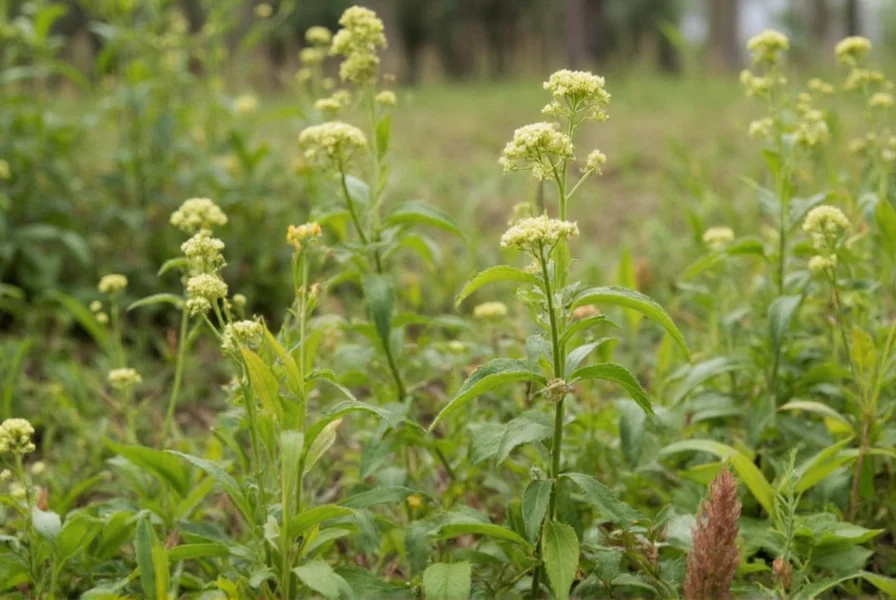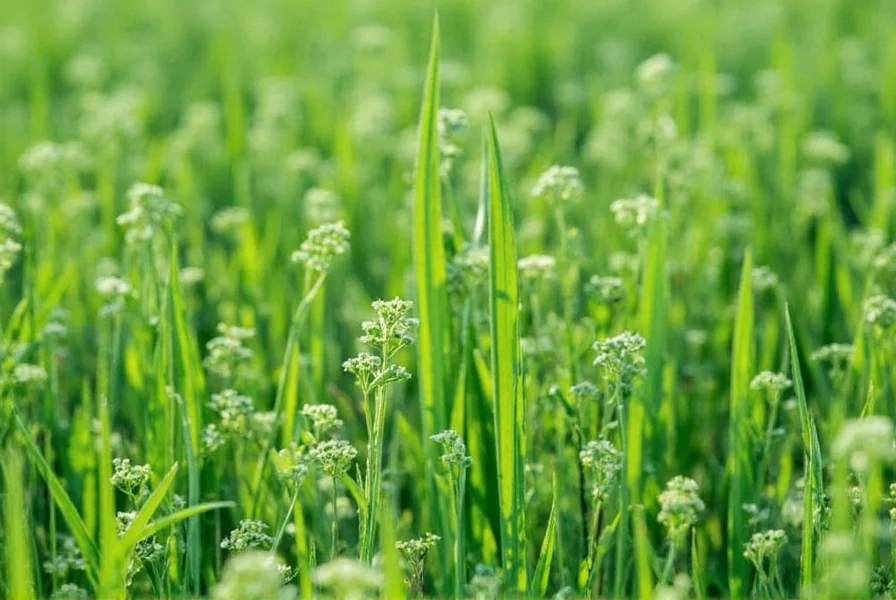For centuries, traditional Indian medicine systems have relied on botanical wisdom passed down through generations. The rich heritage of Indian herbal medicine, primarily documented in Ayurveda—the ancient Indian system of healing—offers a holistic approach to wellness that continues to influence modern health practices worldwide. This comprehensive guide explores the most significant Indian herbs, their traditional applications, and what contemporary science says about their potential benefits.
The Historical Significance of Indian Herbal Medicine
The practice of using Indian herbs for healing dates back over 5,000 years to the Vedic period. Ayurveda, which translates to "science of life," represents one of the world's oldest holistic healing systems. Ancient texts like the Charaka Samhita and Sushruta Samhita meticulously documented hundreds of Indian medicinal plants and their therapeutic applications.
Unlike Western medicine's symptom-focused approach, traditional Indian herbal medicine emphasizes balancing the body's three doshas (Vata, Pitta, and Kapha) to maintain health. This preventive approach considers each person's unique constitution when recommending herbal treatments, making it a personalized system of care.
Top 6 Indian Herbs with Traditional and Scientific Significance
While hundreds of plants feature in Ayurvedic practice, certain Indian herbs have gained particular recognition for their versatility and potential health benefits. Here's an evidence-based examination of the most prominent ones:
| Indian Herb | Traditional Sanskrit Name | Primary Traditional Uses | Scientific Research Status |
|---|---|---|---|
| Turmeric (Curcuma longa) | Haridra | Anti-inflammatory, wound healing, digestive aid | Extensively studied; curcumin shows anti-inflammatory properties |
| Ashwagandha (Withania somnifera) | Indian Ginseng | Adaptogen, energy booster, stress reducer | Multiple studies support adaptogenic and stress-reducing effects |
| Tulsi (Ocimum sanctum) | Holy Basil | Respiratory health, immune support, spiritual significance | Research supports immune-modulating and antioxidant properties |
| Neem (Azadirachta indica) | Nimba | Skin conditions, dental health, insect repellent | Validated antimicrobial properties; widely used in skincare |
| Ginger (Zingiber officinale) | Shunthi | Digestive aid, nausea relief, anti-inflammatory | Well-documented effectiveness for nausea and digestion |
| Amla (Phyllanthus emblica) | Amalaki | Rich in vitamin C, hair health, digestive aid | High antioxidant content confirmed; traditional uses being studied |
Turmeric: The Golden Spice of India
Turmeric stands as perhaps the most researched Indian herb globally. The active compound curcumin gives turmeric its distinctive yellow color and has been the subject of thousands of scientific studies. Traditional Ayurvedic practitioners used turmeric for its anti-inflammatory properties long before modern science validated these effects.
Research published in the Journal of Medicinal Food indicates that curcumin may help reduce inflammation markers in the body, potentially benefiting those with arthritis and other inflammatory conditions. However, curcumin has low bioavailability, which is why traditional preparations often combine turmeric with black pepper (containing piperine) to enhance absorption—a practice now supported by contemporary research.

Ashwagandha: The Stress-Adapting Powerhouse
Ashwagandha, known as "Indian ginseng," functions as an adaptogen in Ayurvedic medicine—helping the body resist stressors of all kinds. The name translates to "smell of horse," referring to its traditional use for increasing strength and vitality.
A comprehensive review in Phytotherapy Research analyzed multiple clinical trials and found ashwagandha significantly reduced stress and anxiety levels compared to placebo. The herb appears to regulate the body's stress response system, particularly cortisol levels. Unlike pharmaceutical anxiety treatments, ashwagandha generally doesn't cause drowsiness or dependency, making it an appealing natural option for stress management.
Tulsi: The Sacred Healing Basil
Tulsi, or holy basil, holds spiritual significance in Hinduism while serving practical medicinal purposes. Ayurvedic texts describe tulsi as supporting respiratory health, particularly for conditions like bronchitis and asthma.
Modern research in Evidence-Based Complementary and Alternative Medicine confirms tulsi's adaptogenic properties and its potential to support immune function. The herb contains compounds like eugenol and ursolic acid that demonstrate antioxidant and anti-inflammatory effects in laboratory studies. Many Indians consume tulsi daily as tea for general wellness—a practice gaining popularity worldwide.
Traditional Knowledge vs. Scientific Validation
One critical aspect of discussing Indian herbs is distinguishing between traditional uses and scientifically validated benefits. While Ayurveda has documented herbal applications for millennia, modern science requires rigorous clinical trials to confirm efficacy and safety.
For example, neem's traditional use for skin conditions has substantial scientific backing for its antimicrobial properties, while some traditional claims about amla's effects on hair growth require more rigorous human studies. This distinction matters because:
- Some traditional uses have strong scientific support
- Other uses lack sufficient evidence or have been disproven
- Some herbs may interact with medications or have contraindications
The National Center for Complementary and Integrative Health (NCCIH) emphasizes that while many Indian herbs show promise, more high-quality human studies are needed to confirm traditional claims and establish proper dosages.
Safety Considerations for Using Indian Medicinal Herbs
Despite their natural origin, Indian herbs aren't automatically safe for everyone. Important safety considerations include:
- Potential interactions: Ashwagandha may interact with thyroid medications and sedatives
- Pregnancy concerns: Turmeric in medicinal amounts may stimulate the uterus; tulsi may affect hormone levels
- Quality variations: Herbal supplements aren't regulated like pharmaceuticals, leading to inconsistent potency
- Contamination risks: Some imported herbal products have tested positive for heavy metals
The American Herbal Products Association recommends consulting with a healthcare provider knowledgeable in botanical medicine before using Indian herbs therapeutically, especially if you have chronic health conditions or take prescription medications.
How to Incorporate Indian Herbs Safely into Your Wellness Routine
For those interested in exploring traditional Indian herbs, here are evidence-based suggestions for safe integration:
- Start with culinary uses: Incorporate turmeric and ginger into cooking before trying concentrated supplements
- Choose reputable brands: Look for third-party tested products with transparent ingredient lists
- Begin with low doses: Especially with potent herbs like ashwagandha, start with minimal amounts
- Monitor your body's response: Keep a journal of any changes in symptoms or side effects
- Consult integrative healthcare providers: Find practitioners trained in both conventional medicine and herbal therapeutics
Remember that traditional Indian herbal medicine views herbs as part of a holistic lifestyle approach—not quick fixes. Ayurvedic practitioners typically recommend dietary changes, stress management techniques, and proper sleep alongside herbal treatments for optimal results.
Preserving Traditional Knowledge While Advancing Scientific Understanding
The growing global interest in Indian herbs presents both opportunities and challenges. On one hand, scientific validation helps preserve traditional knowledge by documenting its efficacy. On the other hand, commercialization sometimes leads to overharvesting of wild plants and cultural appropriation without proper acknowledgment.
Organizations like the Foundation for Revitalization of Local Health Traditions work to document traditional knowledge while ensuring communities benefit from commercial applications. Sustainable harvesting practices and fair trade principles are becoming increasingly important as demand for Indian medicinal herbs grows worldwide.

Conclusion: Respecting Tradition While Embracing Evidence
Indian herbs represent a treasure trove of traditional knowledge that continues to offer valuable insights for modern wellness. From turmeric's anti-inflammatory properties to ashwagandha's stress-reducing effects, these botanicals have earned their place in contemporary health discussions.
However, approaching Indian herbal medicine with both respect for its cultural origins and commitment to scientific evidence represents the most responsible path forward. By understanding both the historical context and current research status of these plants, we can make informed decisions about incorporating them into our wellness routines while honoring their rich heritage.
Frequently Asked Questions
What are the most scientifically supported Indian herbs for stress reduction?
Ashwagandha has the strongest scientific support among Indian herbs for stress reduction. Multiple clinical trials, including a study published in the Journal of Alternative and Complementary Medicine, have demonstrated its effectiveness in reducing cortisol levels and self-reported stress scores. Rhodiola and tulsi (holy basil) also show promising research for stress management, though with less extensive human studies than ashwagandha.
Can turmeric really help with inflammation?
Yes, numerous studies support turmeric's anti-inflammatory properties, primarily due to its active compound curcumin. Research published in the Journal of Medicinal Food indicates curcumin may help reduce inflammation markers in conditions like arthritis. However, curcumin has low bioavailability, so it's often combined with black pepper (containing piperine) to enhance absorption. The typical effective dose used in studies ranges from 500-2,000 mg of curcumin daily.
Are Indian herbs safe to use with prescription medications?
Indian herbs can interact with prescription medications, so consulting a healthcare provider is essential before combining them. For example, ashwagandha may interact with thyroid medications and sedatives, while turmeric in high doses might increase bleeding risk when taken with blood thinners. Neem may lower blood sugar levels, potentially enhancing the effects of diabetes medications. Always disclose all herbal supplements to your healthcare providers to avoid adverse interactions.
What's the difference between Ayurvedic herbs and regular spices?
While some Ayurvedic herbs like turmeric and ginger are used as culinary spices, Ayurvedic practice employs them in specific therapeutic contexts with precise preparation methods. Ayurvedic herbs are often used in combinations designed to enhance efficacy and reduce side effects, following principles of Rasa (taste), Virya (potency), and Vipaka (post-digestive effect). The therapeutic application in Ayurveda considers an individual's constitution (dosha), current imbalances, season, and other factors—going beyond simple culinary use.











 浙公网安备
33010002000092号
浙公网安备
33010002000092号 浙B2-20120091-4
浙B2-20120091-4